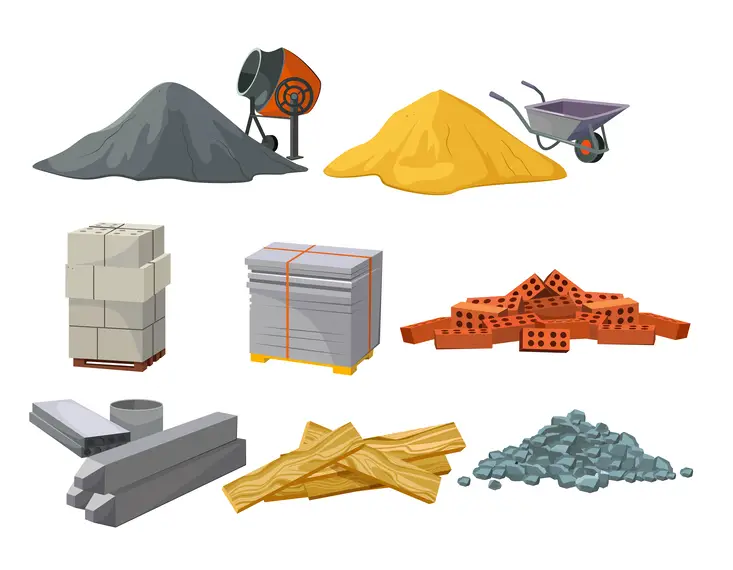Last Updated on August 22, 2022
What are Common Building Materials?
Common building materials are very important for civil engineers to know. Building materials are all materials which can be used to build. It usually consists of timber, concrete, steel, cement, add-ons, bricks, clay, metal and more. People used pure stones, wood or straw in the olden ages. But engineers have learned to combine the best materials and combine them to create high-quality structures in this new era. Naturally, the decision is often dependent on customer budgets and material efficiency in the construction of projects.
As we said, many natural substances, like timber, sand, clay, rocks, wood, and branches and leaves, have been used in the building processes as common building materials. Some of these continue to be used extensively in modern building, especially in America, where most of the houses are still made of wood.
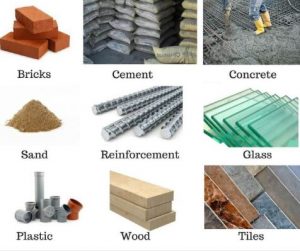
In the previous years, there were several man-made products and some are synthetic. But not natural, some of them are used to build green building houses, for example 3D houses.
It is also positive because wood is now being used less and less in building, thereby protecting Mother Earth. Today, most of the construction materials are produced. And in many countries, the industry is well known. This only shows that the building industry is healthy and grows year after year.
To make a quality structure, all construction materials in civil engineering can be used. Though it also depends on how it is used in building. For this purpose, construction site managers and field engineers need to closely study their projects’ materials.
1. Concrete

Most industrial and commercial buildings today consist of concrete. Its strength and durability make it trendy. The substance is a composite, commonly made from aggregate and cement.
The most famous concrete in these days is Portland. For its later hydrated and hardened mixture, it uses mineral aggregates like sand and gravity, portland cement and water. The end-game? A composite of stone-like construction.
However, the tensile strength of concrete is low. The implementation of steel rods and rebars usually improves it. We therefore have foundations of reinforced concrete.
Concrete is normally weakened by air bubbles. As a result, extra caution should be exercised when pouring concrete in building. The bubbles that emerge during the pouring process are removed using vibrators.
2. Steel as Building Materials
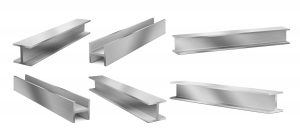
For large buildings as for instance skycrapers or as exterior surfaces, metal has been used as a structural framework. Many metal forms are used for construction. Steel is a metal alloy, which has an iron component and is the usual option for the building of metal structures. It is solid, durable, and long-lasting when processed and/or handled. When it comes to longevity, corrosion is the principal enemy of metal.
In aluminum alloys and tin the lower density and better corrosion resistance sometimes overcome their increased price. Brass was more prevalent in the past but is mostly confined today to some applications or specialist papers.
In prefabricated buildings, including the Quonset hut, metal figures are very prominent and can be found in most cosmopolitan towns. Much human labor is required for the production of metal, particularly in the large quantities required for the construction industries.
Other elements are titanium, chromium, gold or silver. Titanium can be used for the purposes of structure, but is far more costly than steel. Chrome, gold and silver are used for decorating purposes because they are costly and have lower structural characteristics, such as strength or hardness.
3. Brick and Block

A brick is a block of fired stove, normally of clay or a shale, but it can also be of poorer content. Clay bricks are made by a mould (soft mud method) or more often by extruding clay through a die and then wire it in a commercial manufacture to the appropriate scale (the stiff mud process).
In 1700, 1800 and 1900, bricks were commonly used as building material. This was most likely because in the ever-growing cities it was much more fire resistant than wood and relatively inexpensive to make.
In the late 20th century, another kind of block replaced clay bricks. It was the block of Cinder. Made mainly of concrete.
The sandcrete stone, which is softer but cheaper than fires, is a significant low cost commodity in developing countries.
4. Wood as Building Materials
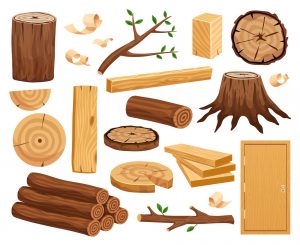
Another example of common building materials is wood. Wood is a tree product and at times fibrous plants which, when cut into or pressed into wood and board, are used for building purposes, like plates, planks or like materials. It is a generic construction material in civil engineering which is used in almost every form of construction in most climates.
Wood can be very resilient under loads, it maintains strength when bent, and is very sturdy when vertically compressed.
The various wood varieties, including the same tree species, have several different characteristics. This means that species unique to different needs are greater than others. And increasing requirements are critical for quality decision-making.
Wood has historically been used as logs for the construction of massive buildings. The trees have been cut down to the required amount, often cut off from bark, and then lashed into place or notched.
5. Mud and Clay
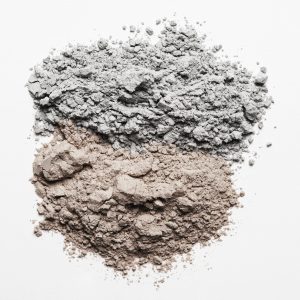
Natural building materials including mud and clay are still used today. Different types of buildings are created depending on how much mud or clay is used in construction, so mud and clay should be used if you want design flexibility.
The consistency of the soil used is the determining factor in the sum of each material to be used. Adobe-style houses may be constructed with larger quantities of clay. Sod construction, on the other hand, can use a smaller volume of clay soil.
The amount of sand/gravel and straw/grass you use, in addition to the soil, will affect the clay structure you make. Hand-compacting clay between planks was once the method of choice for constructing rammed earth walls. However, in today’s world, clay is processed using a mechanical pneumatic compressor to provide more intact rammed earth.
The right thermal mass is one of the reasons why mud and clay are still in use as common building materials today. Clay soil-based structures are cool in the summer and wet in the winter. Clay is known for its ability to retain heat or cold, serving like a natural air conditioner.
6. Rock
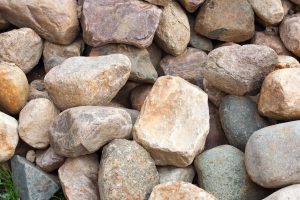
The use of rock can be tracked all the way back to the beginning of time. In reality, the Egyptian civilization, especially the pyramids, was built entirely of rock. Even if you won’t see cave-style rock houses these days, rocks are still used as parts or other building materials since it’s one of the longest-lasting materials available. It is therefore a less costly commodity to obtain since it is widely available.
However, there are several different varieties of rock, each with its own set of characteristics. But, before you use rocks in your construction, make sure you have a high quality rock.
Rock is generally a very compact stone, making it an excellent defensive material. Its weight and energy density are considered its greatest disadvantages, as keeping stones warm can be challenging. A mortar was used to hold stones together in the past, but nowadays, cement is the most widely used material.
What are Sustainable Building Materials?
1. Solar Panels

If you want to use renewable energy while also lowering your electricity costs, solar panels are the most environmentally friendly choice. The use of solar panels in yards and on roofs is expanding as technology advances and architectural styles become more aesthetically acceptable. A residence can lessen its reliance on nonrenewable energy by using solar panel tiles or mounted structures.
2. Bamboo
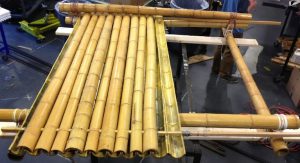
Consider adopting bamboo flooring if you want to make a highly daring choice for sustainable living. Although you might not want to go through the effort of installing bamboo flooring throughout your entire home, it is a good alternative for additions, mudrooms and antechambers. In spite of having a harvest cycle of only three years, as opposed to a conventional tree’s 25 years, bamboo is very similar with traditional wood in appearance. Making the decision to use bamboo will allow trees to have a chance to regrow, slowing the rate of deforestation.
3. Smart Glass Windows
A material that has typically been static can now become dynamic and multipurpose thanks to smart glass. Visible light and UV light may all be controlled thanks to this technology. The technology behind smart privacy glass products enables transparent materials to change from clear to partially or entirely opaque on demand.

In other words, the smart glass technology has the ability to change the amount of light that passes through normally transparent materials, making them look transparent, or opaque. Smart glass technology helps to combine the conflicting functional and architectural requirements and balances the advantages of natural light, views, and open floor plans with the necessity for energy efficiency and privacy.
4. Composite Roofing Shingles
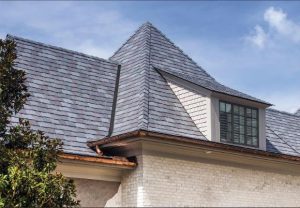
Many composite roofing shingles include recycled rubber and polymers, while every manufacturer has their unique compositions. All of them contain inhibitors to lessen the effects of UV radiation as well as polymers for strength. The end result is durable building materials that can survive strong storms, winds and the damaging effects of direct sunshine. Being very durable and long-lasting, we can include composite roofing shingles in sustainable building materials.
5. Insulating Concrete Framing
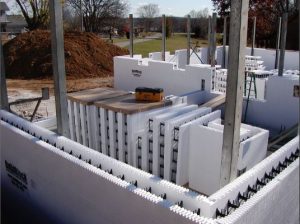
In addition to determining the types of repairs your house can withstand, framing is a crucial component in reducing heating and cooling costs. Insulating concrete framing offers an airtight barrier that prevents unwanted energy transfers and also offers superior thermal mass to help maintain a stable interior temperature. Prefabricated wood panels, on the other hand, will have tiny cracks that allow for the transfer of air and moisture into and out of your home.
In this article, common building materials have been explained. Hope you enjoyed it!

